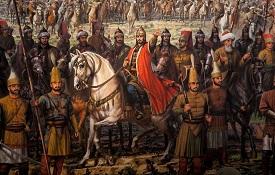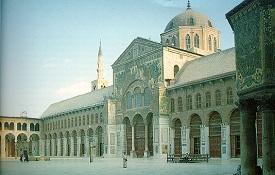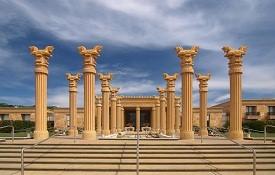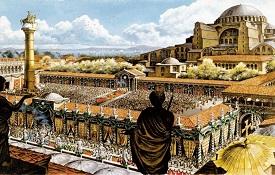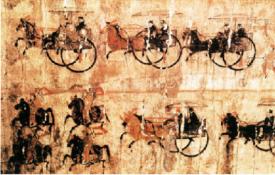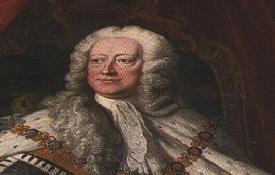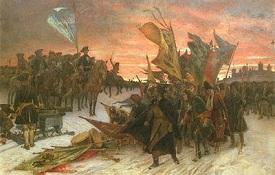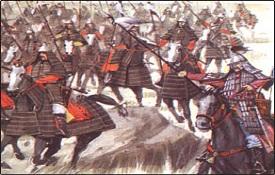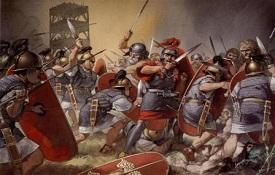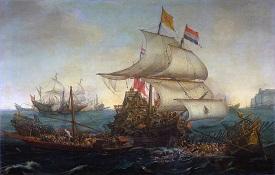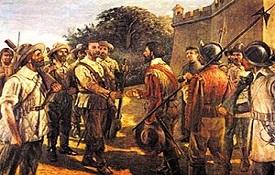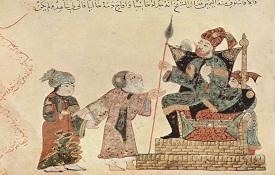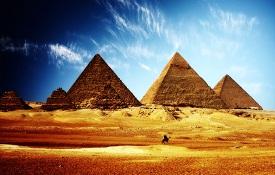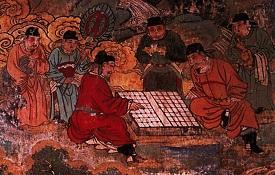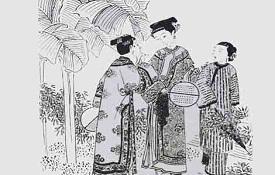Here are the greatest civilizations history ever saw!
Ottoman empire
At the height of its power (16th–17th century), the Ottoman Empire spanned three continents, controlling much of Southeastern Europe, Western Asia and North Africa. It contained 29 provinces and numerous vassal states, some of which were later absorbed into the empire, while others were granted various types of autonomy during the course of centuries. The empire was at the center of interactions between the Eastern and Western worlds for six centuries. With Constantinople as its capital city, and vast control of lands around the eastern Mediterranean during the reign of Suleiman the Magnificent (ruled 1520 to 1566), the Ottoman Empire was, in many respects, an Islamic successor to the Eastern Roman (Byzantine) Empire.
Umayyad Caliphate
The Umayyad Caliphate was the second of the four Islamic caliphates (systems of governance), established after the death of Mohammed. It was ruled by the Umayyad dynasty, whose name derives from Umayya ibn Abd Shams, the great-grandfather of the first Umayyad caliph. Although the Umayyad family originally came from the city of Mecca, Damascus was the capital of their Caliphate. Eventually, it would cover more than five million square miles, making it the largest empire the world had yet seen, and the fifth largest contiguous empire ever to exist. The Umayyads established the largest Arab-Muslim state in history. From the time of Mohammed until 1924, successive and contemporary caliphates were held by various dynasties – the last being the Ottoman Empire (above).
Persian Empire(Achaemenid Empire)
Achaemenid Empire
Babylonian, Akkadians, Assyrians, Sumerians, Hitites, Bactrians, Scythians, Parthians, Medes, Elamites, Egyptians, Ethiopians… Before the Romans, there were the Persians. They basically unified the whole of Central Asia which consisted of a lot of different cultures, kingdoms, empires and tribes. It was the largest empire in ancient history. At the height of its power, the empire encompassed approximately 8 million km2. The empire was forged by Cyrus the Great, and spanned three continents: Asia, Africa and Europe.
Byzantine Empire
Hagia Sophia West View
The Byzantine Empire, or Eastern Roman Empire, was the Roman Empire during the Middle Ages, centered on the capital of Constantinople, and ruled by emperors in direct succession to the ancient Roman emperors. It was called the Roman Empire, and also Romania. During its existence, of over a thousand years, the Empire remained one of the most powerful economic, cultural and military forces in Europe, despite setbacks and territorial losses, especially during the Roman–Persian and Byzantine–Arab Wars. The Empire received a mortal blow in 1204 by the Fourth Crusade, when it was dissolved and divided into competing Byzantine Greek and Latin realms. Despite the eventual recovery of Constantinople and re-establishment of the Empire in 1261, under the Palaiologan emperors, successive civil wars in the fourteenth century further sapped the Empire’s strength.
Han Dynasty
Maphan
During the Chinese period of warring states, the whole of China was embroiled in a civil war as the different kingdoms within it battled it out with each other in the quest for supremacy. In the end, the Qin State won, and gobbled up the whole of China, with 40 million people under it’s control. The Qin Dynasty didn’t last long, and soon it went to the Han, which eventually controlled China for close to 400 years. The period of the Han Dynasty is considered a golden age in Chinese history in terms of scientific achievement, technological advance, economic, cultural and political stability. Even to this day, most Chinese people refer to themselves as the Han people. Today, the “Han people” is considered the largest single ethnic group in the world.
British empire
At it’s greatest extent, the British empire was known as the largest empire in history, as it covered more than 13,000,000 square miles, which is approximately a quarter of the Earth’s total land area, and controlled more than 500 million people – again a quarter of the world’s population. As a result, the legacy it imprinted on these conquered lands is tremendous in terms of political reform, cultural exchanges and way of life. The English language, which it spread, is the second most-widely spoken language in the world today, and many linguistics agree that English is the defacto standard language of the world. The British empire is definitely one of the most influential empires ever to have existed in human history.
The Russian Empire
The Russian Empire was a state that existed from 1721 until the Russian Revolution of 1917. It was the successor to the Tsardom of Russia, and the predecessor of the Soviet Union. It was the second largest contiguous empire in world history, surpassed only by the Mongol Empire, and the third largest empire behind the British Empire and the Mongol Empire. At one point in 1866, it stretched from eastern Europe, across Asia, and into North America.
Mongol Empire
It all started when Temujin (who was later known as Genghis Khan), vowed in his youth to bring the world to his feet. He almost did. His first act was unifying the scattered Mongolian tribes. Then he set his sight on China, and the rest is history. From Vietnam to Hungary, the Mongol Empire is the largest contiguous empire in the history of mankind. Unfortunately for them, their empire was too big to be controlled, and there was no unity among the different cultures. The Mongols were fearless and ruthless fighters, but had little experience in administration. The image of the mongols as a brutal and savage people is renowned through history.
Roman empire
At first they were ruled by divine kings, then they became a republic (perhaps their greatest period) before finally becoming an empire. How a group of farmers, who started off fending wolves to protect their livestock, eventually became the greatest empire in all history is the stuff of legends. Coupled with an excellent military and administrative system, the Roman Empire, or rather ancient Rome, is also one of the longest-lasting. Counting from its founding to the fall of the Byzantine empire, ancient Rome lasted for a whopping 2,214 years!
Ancient Rome contributed greatly to the development of law, war, art, literature, architecture, technology, religion and language in the Western world. In fact many historians consider the Roman Empire to be a perfect empire – influential, fair, long-lasting, big, well defended and economically advanced. The influence of the Roman Empire is felt to this day, if for no other reason than the influence on the Catholic Church, which took much of its administrative nous and pageantry from it.
Share
Spanish Empire
Spanish Empire was one of the first global empires The Spanish Empire covered 7.72 million square miles of land – more than 13% of the earth’s landmass. The empire had 68.2 million people between 1740 and 1790 — about 12% of the world’s population. Spain’s empire began in the days of Columbus and lasted, in parts of Africa, until the latter 20th century. Spanish is now the second most spoken language in the world
Portuguese Empire
Portuguese colonization
The Portuguese Empire was the first global empire in history, as well as the longest-lived modern European colonial empires.
The empire began with the capture of Ceuta in 1415 and ended in 1999 with the handover of Macau. The empire’s most valuable colony, Brazil, won its independence in 1822. Following a war in 1974 to overthrow the regime, the empire’s government recognized the independence of all its colonies, except for Macau. Macau was returned to China in 1999.
The Abbasid Caliphate
The Abbasid Caliphate covered 4.29 million square miles of land – more than 7% of the earth’s landmass.
The empire had an unknown population number in 750 and claimed Baghdad as its capital.
While population numbers are unknown, the empire lasted from 750 to 1258 and only went into decline as the Turkish army rose to power.
Ancient Egypt
Ancient Egypt was an ancient civilization of Northeastern Africa, concentrated along the lower reaches of the Nile River in what is now the modern country of Egypt. It is one of six civilizations globally to arise independently. Egyptian civilization coalesced around 3150 BC (according to conventional Egyptian chronology) with the political unification of Upper and Lower Egypt under the first pharaoh.[2] The history of ancient Egypt occurred in a series of stable Kingdoms, separated by periods of relative instability known as Intermediate Periods: the Old Kingdom of the Early Bronze Age, the Middle Kingdom of the Middle Bronze Age and the New Kingdom of the Late Bronze Age. Egypt reached the pinnacle of its power during the New Kingdom, in the Ramesside period where it rivalled the Hittite Empire, Assyrian Empire and Mitanni Empire, after which it entered a period of slow decline. Egypt was invaded or conquered by a succession of foreign powers (such as the Canaanites/Hyksos, Libyans, Nubians, Assyria, Babylonia, Achaemenids and Macedonian Greece) in the Third Intermediate Period of Egypt and Late Period. In the aftermath of Alexander the Great’s death, one of his generals, Ptolemy Soter, established himself as the new ruler of Egypt. This Greek Ptolemaic Dynasty ruled Egypt until 30 BC, when, under Cleopatra, it fell to the Roman Empire and became a Roman province.
Yuan Dynasty
Yuan Dynasty covered 5.41 million square miles of land – more than 9% of the earth’s landmass.
The empire had almost 60 million people in 1291 — about 17% of the world’s population.
The Yuan Dynasty, which was founded by the grandson of Genghis Khan, began in 1271.
Five years after founding the dynasty, Kublai Khan captured the capital of the rival Southern Song Dynasty and unified all of China. The dynasty enjoyed a bountiful life, encouraging trade with foreign countries as well as a visit from famed Italian merchant Marco Polo.
Qing Dynasty
Qing Dynasty was China’s last dynasty
The Qing Dynasty covered 5.68 million square miles of land – nearly 10% of the earth’s landmass.
The empire had more than 432 million people in 1851 — more than 35% of the world’s population.
Founded when the Chinese defeated the Mongols, the Qing Dynasty ruled China from the 17th to the 20th century, with the height of its power and reach peaking in the 1800s. The Republic of China took over the government at the end of the Qing Dynasty

